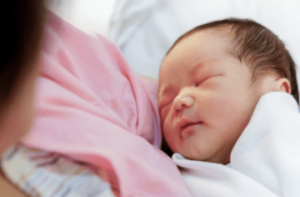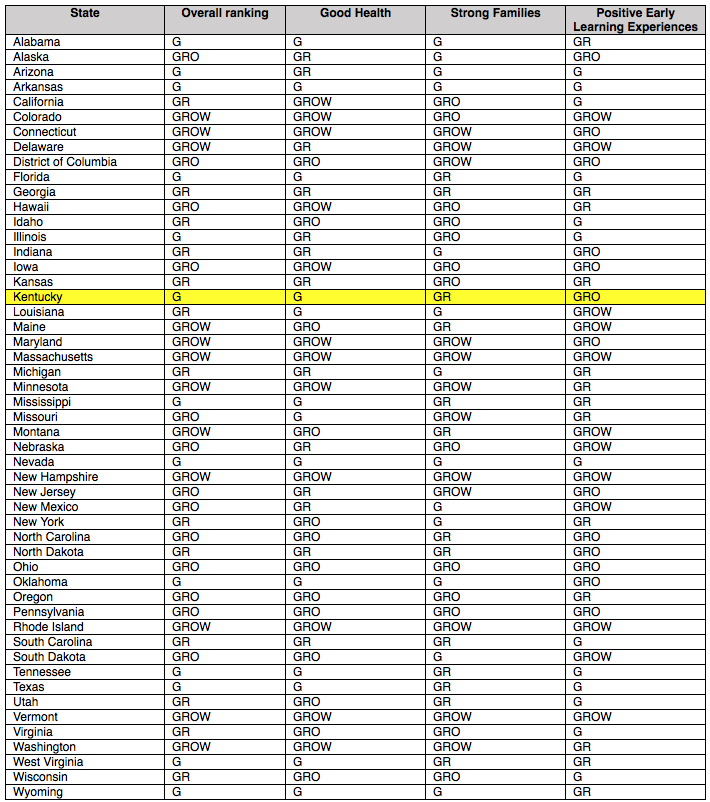Kentucky ranks as a bottom state for babies, according to a first-of-its-kind report. The State of Babies Yearbook: 2019 compiles nearly 60 indicators that affect the well-being of children ages 0 to 3 and provides an in-depth look at national and state-by-state progress across three policy areas: Good Health, Strong Families, and Positive Early Learning Experiences.
Researchers from the early childhood development nonprofit ZERO TO THREE and the non-partisan research organization Child Trends used these indicators to compare and rank states based on how they support the youngest in America.

Kentucky was among 13 states across the United States and the District of Columbia to earn a ranking in the lowest tier out of four. However, the Yearbook highlights areas where Kentucky still has room to improve to give the youngest Kentuckian — which makes up 3.7 percent of the state population — the chance to thrive.
“Each of the 165,675 babies in Kentucky was born with a bundle of unlimited potential and the first three years of their life will shape every year that follows,” said Myra Jones-Taylor, chief policy officer of ZERO TO THREE. “But far too many babies face persistent hardships—such as food insecurity, unstable housing, and exposure to violence—that undermine their ability to grow and thrive.”
The State of Babies Yearbook: 2019 reveals that the state where babies are born makes a difference in their chances for a strong start in life. Also, because of historical and structural inequalities, children of color are more likely to be poor, to be born too soon or too small, and to live in environments that challenge their families’ security. Not only is there wide variation between states on availability and access to policies and programs that support babies, there is also wide variation of outcomes affecting children’s development and well-being. This highlights the relationship between policy supports for babies and families and the chance to overcome adversity.

Kentucky’s young children fare better than the national average in:
• Uninsured rate: 4.1 percent of low-income infants and toddlers in Kentucky are uninsured, compared to the national average of 5.8 percent.
• Crowded housing: 9.2 percent of Kentucky’s babies live in crowded housing, compared to the national average of 15.6 percent.
• Home visiting: 5.4 percent of potential home visiting beneficiaries are served in Kentucky, compared to the national average of 1.9 percent.
Kentucky’s young children fare worse than the national average in:
• Food security: 36.1 percent of babies in Kentucky face low or very low food security, compared to the national average 16.5 percent.
• Maltreatment: Kentucky’s maltreatment rate is 34.9 per every 1,000 children, compared to the national average of 16.
• Reading: 36.3 percent of parents in Kentucky read to their baby every day, compared to the national average of 38.2 percent.
The State of Babies Yearbook uses a transparent ranking process to group states into one of four tiers to provide a snapshot of how states fare on the selected indicators and domains. These tiers represent four groupings of states that are approximately equal in size and ordered from highest to lowest performing. We use the following tiering symbols to designate a given state’s placement in one of the four tiers:
• “GROW” for Working Effectively
• “GRO” for Improving Outcomes
• “GR” for Reaching Forward
• “G” for Getting Started

See the national profile and state data at stateofbabies.org.














